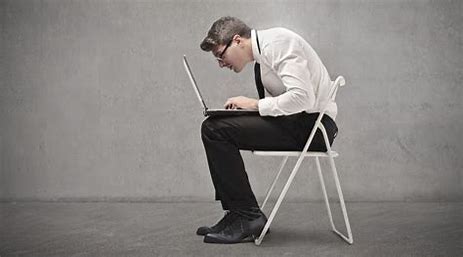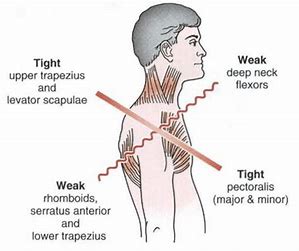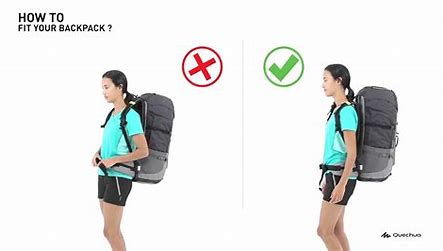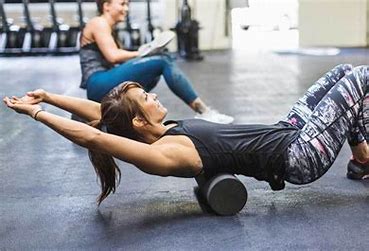Something we have seen alot in the clinic lately is parents bringing in their 8-18 year olds with concerns about their posture. Perhaps you have noticed they are starting to sit in a slumped position more often, perhaps their chin is also poking forward. We often hear the similar story of “I’ve tried telling them to sit up tall but they just don’t listen!” This is frustrating for both the child and parent. You feel like they are not listening to you and they feel like you are nagging. It’s a lose lose situation.
If this is sounding awfully familiar to you, read on!
What are some of the reasons my child has poor posture?
Technology Use
Spending too much time on technology is the most common reasoning from parents that we hear. There is plenty of research to back up that spending too much time on phones or laptops can promote the adoption of poor postures. When poor postures are sustained for a prolonged period of time our muscles can become tighter in one direction and weaker in the other. This mismatch of muscle forces can induce pain and make it physically much harder to resume a ‘good posture’. This might might be why your child says “I am trying to sit up tall but I just can’t”.

School Bags
Another reason for poor posture and postural related pain can be the use of school bags. Most high school aged students will have multiple classes per day. This requires them to transport up to 6 subjects worth of books, textbooks, laptop, clothing for sport, lunch etc. This can mean a child is carrying up to 8-10kgs on their back. If you then add in walking to and from school and between classes they might be carrying this load for anywhere between 1-3 hours per day.
The type of school bag is also of vital importance. Backpacks are certainly preferable to over the shoulder bags. Backpacks distribute the load equally between the Left and Right shoulders/spine. On the other hand, one shoulder bags place all the load through one side of the body. Whilst your child might alternate sides they usually have a preferable side and will use one side more than the other. Over time this can cause pain and discomfort through the shoulders, neck, upper and lower back.
Embarrassment About Height
This has to be one of the most under rated causes of postural issues! In children and adolescents who are comparatively taller than their peers we often observe stooping type behaviours. The child often feels that this makes them blend in more amongst their peers and not stand out as much due to their height. Being embarrassed about their height is typically not information your child will offer up willingly unless you ask the question. I would say on average 50% of patients whom I ask this question to say they are sitting slumped due to their height.

Is their a specific diagnosis for postural conditions?
In some cases their is a specific diagnosis that we can provide. These may include;
- Upper Cross Syndrome
- Text Neck
- Dowager’s Hump
Other times we might refer to the condition more generally as Postural Related Upper Back Pain or Postural Related Neck Pain. It is important to remember that a diagnosis is purely a label and doesn’t dictate how we treat you. We treat the impairments and dysfunctions that we find that is individual to each person.

What are the treatment options?
Treatment will vary person to person and really depends on what is causing the pain. If we go through the aforementioned causes of postural related pain and dysfunction you can get a bit of an idea as to what management might look like.
Technology Use
The use of technology in this day and age is inevitable. Simply telling your child not to use is it, is just not going to cut it. We need to promote optimal workstation setups for your child to complete their school work. This should look like a designated desk with a proper ‘office’ type chair. You can refer to our earlier blog (click the link below) to assist you in setting up your child’s desk/chair. We want to avoid doing school work on the floor, bed and lounge as these will often promote adoption of poor postures.
https://ppsphysiotherapy.com.au/working-from-home-guide-to-staying-healthy/
You may also want to consider limiting your child’s use of technology. If they are spending 8hrs/day during the school holidays on their phone, Playstation or computer then you might need put some rules in place around technology use. Perhaps a hard no with technology causes too much friction, why not suggest an active tech game like Wii Fit or Nintendo Switch? This provides the best of both worlds!

School Bags
School bags should always be a backpack type with two functioning shoulder straps. Off the shoulder bags are not recommended as they place a high load through one side of the body which can lead to muscle imbalances and pain. Where possible school bags should weigh no more than 10-15% of your childs bodyweight. Ideally high school students should utilise a locker and swap their books over at recess and lunch to offload some of the weight during the school day.
The back pack should be adjusted so that it sits high on the back and not hanging down low over the gluteal region.

Embarrassed About Height
This is a really tricky one! We can’t change a child’s height and children grow at variable rates. The tallest child in primary school may end up being the shortest by the end of high school. Providing lots of education and re-assurance that no one else is bothered by their height is a good starting place. Encourage them to embrace it! Sometimes this discussion coming from a health practitioner can be better received than coming from a parent. Because what would mum and dad know – insert teenage eye roll.
Physiotherapy
Physiotherapy will look different for each child as we always customise our treatment plans. Generally speaking though, we would offer some short term pain relief through manual therapy work as our first point of call. We would always prescribe your child with specific exercises to help alleviate their pain in both the short and long term. This might look like mobility exercises, strengthening exercises or a combination of both. Other options include dry needling, postural taping or postural bracing where deemed necessary. We will provide an abundance of advice to both your child and to you as the parent. We always encourage parents to sit in on the consult so that they can see and hear what happens to oversee compliance to treatment at home.

If you are concerned about your child’s posture or they are having postural related pain, get them seen by a physiotherapist for further evaluation. Our staff are all well experienced with treating postural related pain in children and adolescents. Make an appointment to see one of our friendly staff by calling 9672 6752 (Kellyville) or 9871 2022 (Carlingford).

